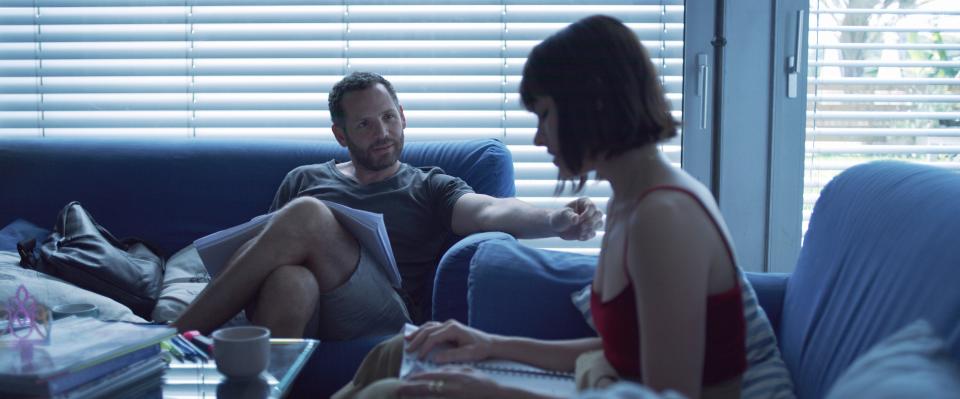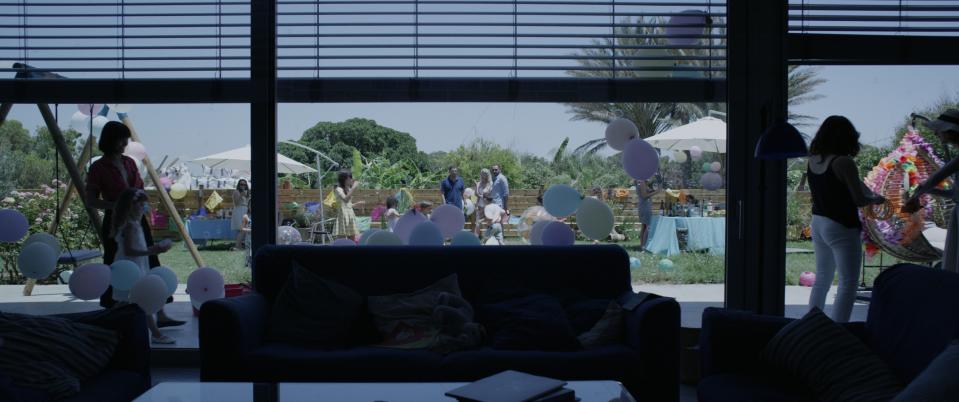In Losing Alice, the Most Compelling Character Is an A-Frame Home
- Oops!Something went wrong.Please try again later.
There’s a lot going on in Losing Alice, the new dramatic-thriller from Apple TV+ that concludes its run this Friday. There’s the titular Alice, an acclaimed film director who—after a string of early hits—has seemingly settled into suburban motherhood, accented by side gigs teaching film and shooting occasional commercials. There’s Alice’s husband, David, a hunky actor still clamoring for that star-making role while trying to retain his perfect father/son/husband image. And finally there’s Sophie, the doe-eye ingenue who suddenly, brazenly, irrevocably enters both of their lives with catastrophic, destabilizing consequences. Over the course of eight taut episodes, Alice and Sophie engage in a passionate pas de deux that threatens to upend their families, their careers, and even their lives.
While shows like Shtisel or Fauda have helped Israel punch above its weight on the global streaming scene, Losing Alice is, perhaps, the nation’s most fully realized series yet. Veteran actor Ayelet Zurer renders Alice at once vulnerable yet formidable, Gal Toren delivers a David who’s both macho and emasculated, while Lihi Kornowski’s Sophie evokes the doe-eyed innocence—and burning sexuality—of a young Beatrice Dalle.

Losing Alice
The cinematography and set design are equally impressive, filled with commuter trains and gala events, fancy suburbs and sprawling vistas. In the hands of director Sigal Avin, Israel—tiny, war-torn, provincial—finally feels like the sophisticated, modern, global nation it’s always aspired to be.
Still, even amid Losing Alice’s dramatic gravitas, the show’s most unlikely star is actually Alice and David’s family home. The building is as sexy and alluring as the show’s comely cast. A-frame and wrapped in walls of glass, the home (in the series) is set about 45 minutes north of Tel Aviv in the posh, pastoral hamlet of Zichron Yaakov—a historic hilltop community in Israel’s wine country overlooking the azure Mediterranean.

Avin says she grew up in the region so it felt personally familiar, but she also wanted a place “with a commute” from Tel Aviv, Israel’s commercial and cultural capital. “Alice goes between the cool, bohemian life of the big city to this beautiful yet suburban home,” Avin observes. Setting the tone for the series’ narrative journey, the commute illustrates Alice’s core internal struggle: “Yes, her life feels very settled,” Avin says. “But Alice is asking herself, ‘Is this it?’”
From first glance, the home feels thoroughly contemporary—clean-lined and open-plan, with a sleek wood and metal façade leading to airy interiors and a sizable backyard. The residence, while standard upper-middle-class fare in Europe or America, stands in sharp contrast to the boxy Modernist apartment blocks that typify most Israeli dwellings (and where the far less affluent Sophia lives). Filled with light and literally pouring onto the gardens and terraces outside, it’s the ultimate bourgeois dream. And Alice—struggling through the obligations of middle-aged conventionality—can’t stand it.
“She hates it,” concedes Zurer of the home, which, in the series, is actually owned by Alice’s suffocating in-laws. “Alice is not free in the home; she’s actually blinded by all of that light,” Zurer continues. “The home represents what you think you know about Alice, but actually know little about at all.”

Losing Alice
In real life, the house is located in Beit Yanai, a tiny, Mediterranean-front hamlet a short drive up the coast from Tel Aviv. “Our director of production actually scouted the home next door and showed me pictures of it,” explains Avin, who—owing to local rapid-fire production schedules—spent a mere 10 days shooting in the home. “But I saw this home in the background and immediately said, ‘That’s our house. That’s the one I want.’”
The property, Avin, explains, was built in the mid-1990s and inspired by a home the owners saw on a trip to Italy. Using wood, metal, and glass, local architect Pesach Melamed transformed their vision into what would ultimately become the physical center point of Losing Alice. “The house is really a character of its own,” Avin says. “It’s very aspirational; it’s the kind of place people like her are supposed to move into, supposed to be happy in.”
Over the course of Losing Alice’s eight-episode arc, the house also emerges as a source of continued and complex conflict. Alice feels trapped in the home, both by the bourgeois life it symbolizes and because her in-laws hold the deed. At the same time, Sophie’s constant presence there—and her increasing closeness to David and their three kids—rattles Alice to the point of near paranoia. And for David, the home emerges as equally confounding as Alice’s absences grow longer while she obsesses over the film she and Sophie are working on together.
“The home just feels extremely cinematic,” says the show’s director of cinematography Rotem Yaron. “It’s like a dollhouse in a way; you can so easily look into other people’s lives there.”
Unlike in many productions, every “home” scene in Losing Alice was filmed in the Beit Yanai house. Every scene, that is, except those set in Alice and David’s bedroom. Those were shot on set, “in a very small room without windows,” Zurer recalls. “So when we finally arrived at the house, there was a real sense of liberation for us all.”

Losing Alice
According to Avin, there was initial concern that the Beit Yanai home—with its contemporary European influences—“wouldn’t feel Israeli enough.” But despite its elegant details and generous proportions, the home’s straightforward design and communal feel actually evoke the functional aesthetic of Israel’s iconic kibbutzim (only with a far larger dose of style).
“Audiences in Israel have been asking about the house, wanting to know all about it,” says Avin, who’s yet to confirm whether Losing Alice will return for a second season. “To American audiences it might look like a ‘normal, regular’ home,” she adds, “but for Israelis to live like this, it’s a pretty big deal.”
Originally Appeared on Architectural Digest

